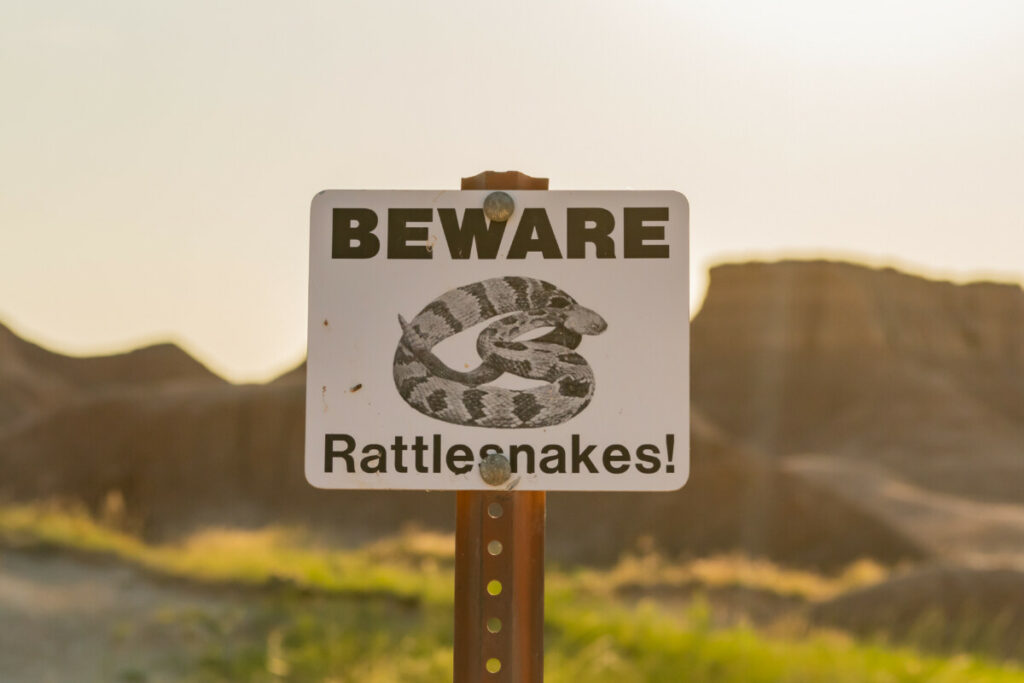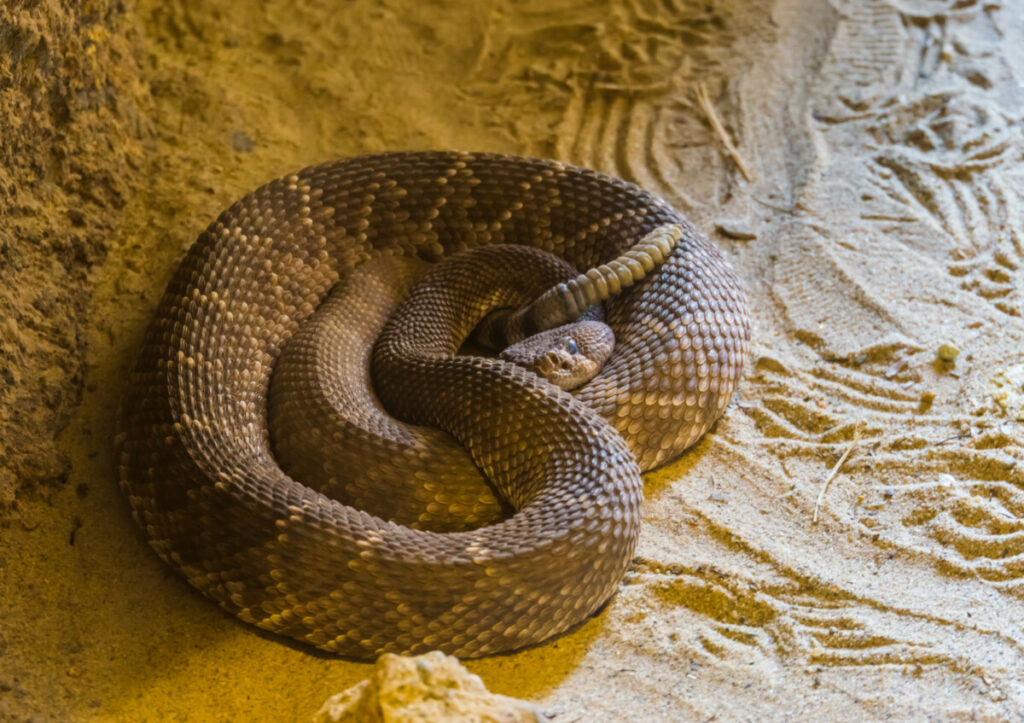
Rattlesnakes are one of the most common snakes and inhabit a wide range of territory. People often fear rattlesnakes and some people are even afraid of being eaten by one. However, do rattlesnakes actually eat humans?
Rattlesnakes are far too small to eat humans, but their venom is dangerous and can kill a human if the bite isn’t treated. Instead, rattlesnakes eat small rodents and any other animals that are small enough for them to swallow, like insects and other reptiles.
Rattlesnakes can’t eat humans, but they still pose a danger to any creature that comes too close. Like all snakes, wild rattlers should be left alone where they can hunt and eat in peace. Venomous snakes tend to leave people alone when they aren’t bothered.
What Do Rattlesnakes Eat in the Wild?
Rattlesnakes tend to live in desert habitats in rocky areas that give them shelter and a place to hide from predators and hunt prey.
Rattlesnakes can get pretty big, up to eight feet in length, but never big enough to swallow a human! In fact, there are very few snakes capable of eating a human, especially a grown one.
Instead, a rattlesnake’s diet consists of small rodents like mice, insects, and occasionally reptiles small enough for them to eat. Snakes can’t chew or tear the flesh off of their prey, so they can only eat food that they can swallow whole.
Because they eat mice and rats, which tend to live around humans where they can get scraps, rattlesnakes sometimes end up in contact with humans. Rattlesnakes, and other snakes, don’t want to attack humans.
We are too big to eat, and venom takes a lot of energy to make, so they don’t want to waste any on us. However, biting is a snake’s only form of defense, so if they feel really threatened, they bite.
For the most part, however, rattlesnakes avoid humans and hunt whatever small animals they come across, which could be rodents, amphibians, bugs, or even other rattlesnakes. Snakes are not picky eaters!
What Happens When a Rattlesnake Bites a Human?
Rattlesnakes don’t want to waste important venom on humans, so they’ll avoid biting one if they can. Occasionally, snakes will give a “dry bite”, which is a bite without injecting venom. These bites still hurt a whole lot and should be avoided.
You should always give venomous snakes plenty of space and seek medical attention for any bites, even if you think it’s a dry bite. Better safe than sorry!
If a rattlesnake does bite you, the first thing you’re going to notice is one or two puncture marks (sometimes only one fang manages to break skin when a snake bites) that are bleeding, swelling, and hurt.
The venom can cause necrosis, which means the tissue around the bite dies. The venom can also cause vomiting and abnormal coagulation patterns, which means your blood isn’t working the way it should. You may start bleeding from other parts of your body besides the bite.
If you can identify the snake that bit you, then take the opportunity, because that can make it easier for doctors to know how to treat your bite. Don’t prioritize identifying the snake over getting to the hospital, however. There are other ways for doctors to know how to treat you than by seeing the actual snake. Do NOT risk getting bitten again just to get a good look at the snake.
Once you are at the hospital, antivenom can be administered until you’ve recovered from the bite. Deaths by rattlesnakes are not very high because of modern medicine and antivenom, so chances are you’ll be able to recover if you get medical attention quickly enough. The best thing to do about a rattlesnake bite, however, is to avoid being bitten in the first place.
How Can You Avoid Rattlesnakes?

The best way to avoid rattlesnake bites is to avoid rattlesnakes! Snakes will avoid human habitats unless we give them an opportunity for food. Places with a high rodent population will attract snakes, so make sure your home doesn’t have a mice or rat problem.
If you go hiking or camping anywhere with a rattlesnake population, keep yourself safe from bites by protecting your feet and legs. Wear sturdy boots and long, thick pants that meet the ankles of your shoes so no part of your leg is exposed. You should also stay on clear trails and avoid tall grasses, logs, and underbrush where snakes might be hiding.
Never approach a snake in the wild! Snakes will often stretch out to bask in the sunlight and may look dead or asleep, but they should still be left alone. There have been cases of people being bitten by beheaded rattlesnakes, so even if you know the snake is dead, leave it alone.
You should also never go into the wilderness alone and always have a buddy with you to contact emergency service and help you out if you get bitten. You should also make sure you have a way to communicate with medical services should you need any.
How Do Rattlesnakes Hunt?
Rattlesnakes are pit vipers, which means they have pits in their face located near their eyes. These pits help them hunt prey. These pits help them sense the heat emitted by their prey, so they can locate their food even in the dark.
They also possess Jacobson’s organs, which are located on the roofs of their mouths. Snakes pick up scents with their tongues by flicking them in the air, then deposit the scents on their Jacobson’s organ to pick up the smell of their prey. Once a rattlesnake has located an animal it wants to eat, it stalks the prey, hiding and getting closer until it can strike.
It will bite the prey and either hold it until it passes or wait nearby for the prey to collapse from the venom. Then, the rattlesnake will swallow its meal whole.
Rattlesnakes, and snakes in general, have a bad reputation because of their scary fangs, but they’re just another animal trying to eat to survive. If they are left alone, they don’t want anything to do with humans, and actually are very helpful as they keep down the rodent population that spreads disease and gets into human food. So don’t disrespect these well-meaning reptiles!
